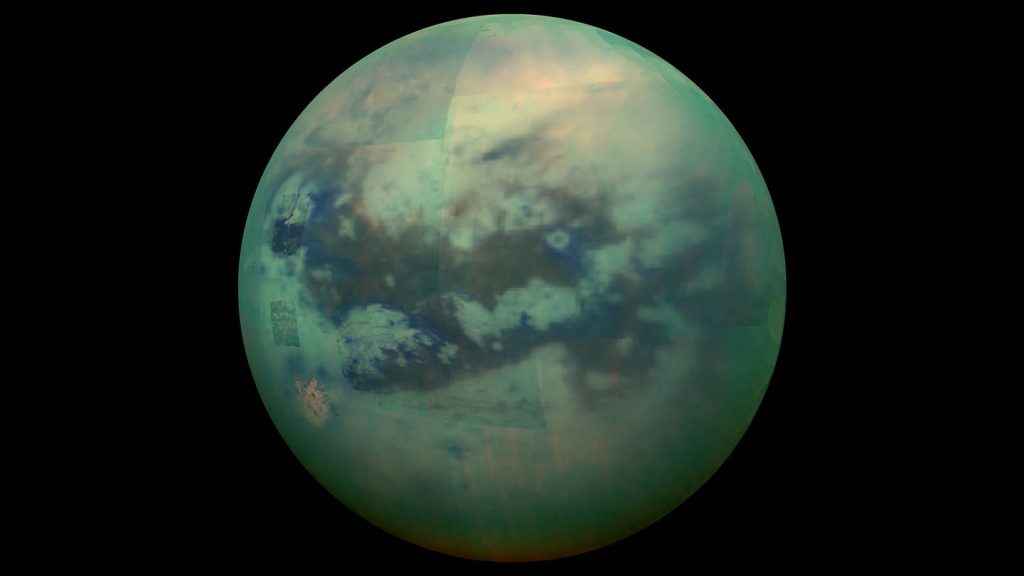Recent research presented at the Lunar and Planetary Science Conference suggested that the dark dunes on Titan, Saturn’s largest moon, might have fallen from space. It is speculated that cometary material from the Kuiper Belt may have struck Titan to form its vast dune fields. Similar material observed on other worlds could also be explained by this scenario. The presence of these dark dunes has long been a topic of interest among planetary scientists.
One leading hypothesis has suggested that Titan’s sandy dunes are made up of organic particles produced by the moon’s hazy atmosphere. These particles eventually grow into sand-sized grains and form dunes. However, it is unclear how this growth process occurs and whether these organic particles can withstand being blown into dunes. Laboratory tests have shown that these particles may break apart too easily, raising questions about their ability to form larger grains.
Another proposed scenario for the origin of Titan’s dunes dates back roughly 4 billion years ago when the giant planets in our solar system migrated to their current positions. During this period, these planets are believed to have passed through the Kuiper Belt, leading to the bombardment of Titan and other moons by comets. Computer simulations suggest that both fine dust and larger impactors could have delivered enough material to account for Titan’s dunes. This simulation also highlights that the same material could have impacted other moons of Saturn and Jupiter.
Despite the evidence pointing towards the plausibility of the origins of Titan’s dark dunes, questions remain about whether the material would remain on Titan’s surface over time. Volcanic activity on Titan could potentially bury or rework the fallen debris, complicating the story of the moon’s sand dunes. However, upcoming missions like NASA’s Dragonfly are set to launch in 2028 and aim to explore Titan, potentially providing more insights into the composition and origins of the moon’s dunes. Through these missions, scientists hope to confirm whether Titan’s dunes have celestial origins.
While the exact nature of Titan’s dark dunes remains a subject of ongoing research and debate, the proposed link to cometary material represents a novel explanation for the presence of these distinctive features on the moon’s surface. With further exploration and advancements in space missions, including the upcoming Dragonfly mission, researchers hope to unlock more secrets about the complex geology and composition of Titan, shedding light on the mysterious origins of its vast dune fields.


